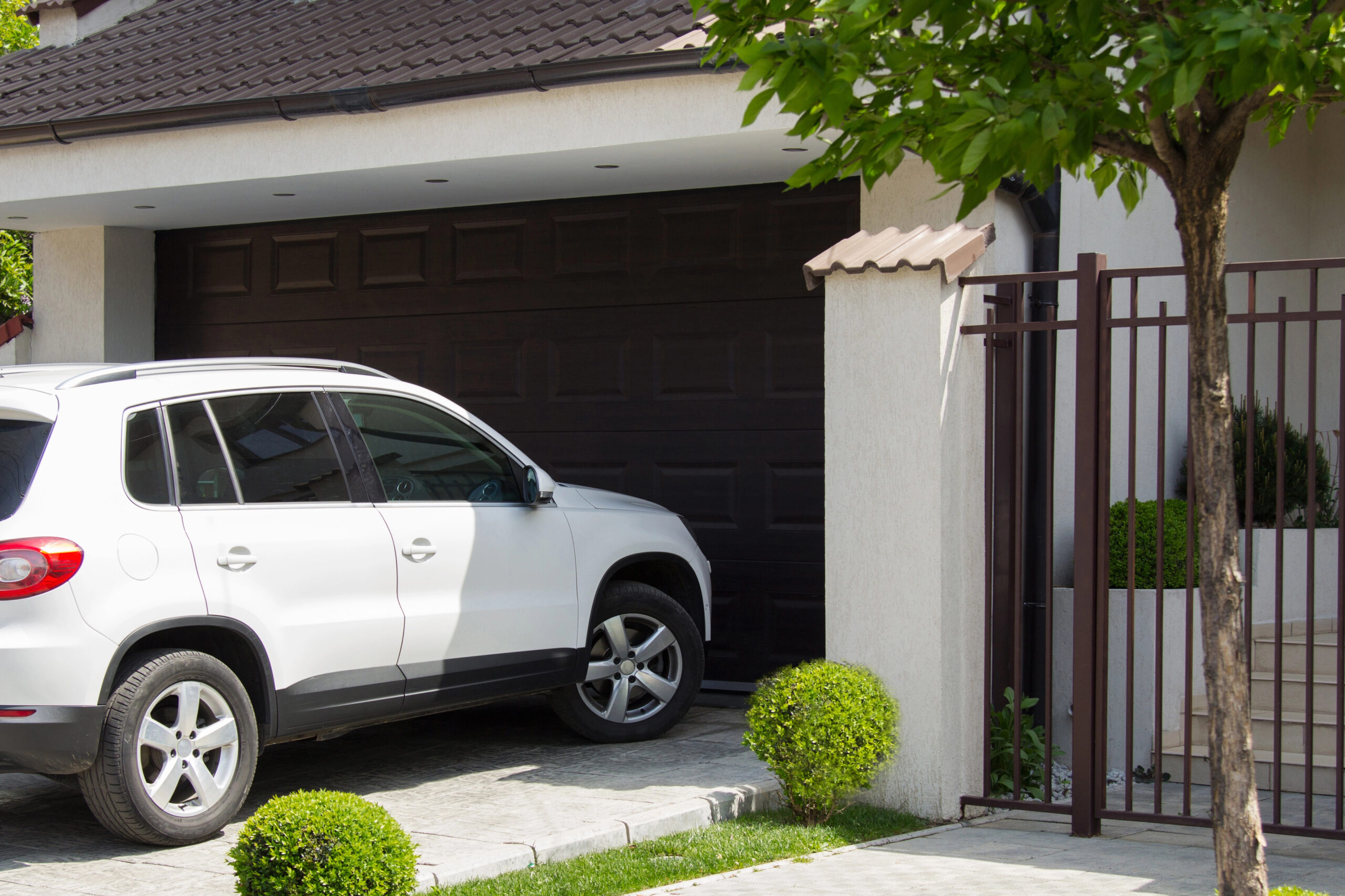You’ve been counting down the days until you could finally call that shiny new car your own. After months of saving and researching, you’ve reached the dealership, ready to drive your new wheels off the lot. But as you approach the sales desk to finalize the paperwork, the rep drops a bombshell: “Before we can hand over the keys, we’ll need proof of insurance.” You’re coming up empty.
Dealerships typically require proof of insurance before finalizing the purchase, so it’s essential you get it squared away ahead of time. If you’re buying a new car and don’t already have one, you’ll need to get a new car insurance policy. If you’re already covered, you’ll need to transfer insurance to the new car as soon as possible.
Here are the ins and outs of getting insurance for your new car — including costs and coverages — so you’ll be ready for your new set of keys in no time.
How much car insurance do I need?
Every state sets its own insurance requirements, so any insurance you purchase must include at least these coverages required in your state. This includes liability coverage in the minimum required limits, and in many states also includes uninsured/underinsured motorist (UM/UIM), and personal injury protection (PIP) or medical payments coverage (MedPay). PIP and MedPay are similar in terms of coverage, and states only require one or the other.
If you can afford to repair or replace your car out-of-pocket, minimum liability is technically enough coverage to drive legally. However, liability only pays out when you’re at fault for someone else’s injuries or damage, and it’s generally a good idea to carry full coverage insurance if you’re driving a new car. A full coverage policy includes the liability insurance required by your state plus comprehensive coverage and collision coverage, which will pay out if there’s damage to your car, minus any deductible, regardless of who caused it.
If you’re leasing or taking out a loan for your new car, your lender will probably require you to carry full coverage as part of your financing terms. You may also be required to carry gap coverage, which is not available from all insurance companies but may be sold by your dealership. Still, it’s best to try and get gap coverage through an insurer if you can, otherwise it might be rolled into your loan, causing you to pay even more in interest.
Full coverage costs more than minimum liability insurance—but if you don’t have it, you could be left paying thousands of dollars in vehicle repairs.
Learn more: Your guide to the 6 types of car insurance coverage
When do I need to buy insurance for my new car?
Generally, you should get insurance for your new car before taking possession of it to avoid legal repercussions, fines or penalties. This also ensures that you’re covered from the moment you start driving.
If you’re uninsured: Buy a new policy
It’s a good idea to start the insurance purchasing process before you buy the car, since a lot of dealerships require you to show proof of insurance before they can finalize your sale. So yes, you need to buy insurance for a car you don’t own yet.
It can take up to a week to get new coverage approved for a car you don’t own yet, depending on factors like how you plan to purchase it (online versus over the phone) and your coverage history. It helps if you have the make, model and year handy to arrange insurance before buying a new car.
You will eventually need to submit the car’s Vehicle Identification Number (VIN) and mileage to your insurance company, but you can use the basics to shop around, compare car insurance quotes, and submit an initial application.
If you’re insured: Add your vehicle to your existing policy
If you already own a car, adding another or transferring your insurance to a new vehicle is fairly simple. Most insurance companies offer a grace period in which your car will be covered before it’s been added to your existing auto policy, so you can typically shop for the car first if you’re in good standing. However, the details of these grace periods may vary depending on your insurer and where you live, including which claims will be covered and how long the grace period lasts.
Contact your insurance agent or service line to let them know you bought a new car and would like to transfer auto insurance coverage from your previous vehicle to the new one. Most insurers offer eligible drivers a grace period for updating their policy with your new vehicle, and in the interim, your old policy will apply if you need to make a claim.
Be ready to provide all the following information about your new vehicle:
- Vehicle identification number (VIN).
- Registration information.
- The name and information of your lender.
- Any vehicle customizations or damage.
- The coverage you would like to apply to the new vehicle.
The average cost of insurance for a new car
Insurance rates tend to be higher for newer cars because they’re worth more, and that means they’d cost more to repair or replace after a wreck. Below you can see average monthly insurance quotes for a brand-new cars compared to quotes for models 2, 5, 10 and 15 years old, and see how prices taper off significantly for older vehicles. These quotes are for full coverage car insurance policies.
|
Car Year
|
Avg Monthly Quote
|
|---|---|
| 2026 | $489 |
| 2025 | $458 |
| 2023 | $423 |
| 2020 | $349 |
| 2015 | $301 |
| 2010 | $253 |
Here are average quotes for Jerry customers insuring brand-new 2025 vehicles with some of the nation’s most popular car insurance companies. These customers all got quotes for full coverage insurance on their new cars.
|
Insurance Company
|
Avg Monthly Quote
|
|---|---|
| Anchor General | $324 |
| Aspen | $425 |
| Aspire Advantage | $285 |
| Assurance America | $499 |
| Bluefire | $432 |
| Bristol West | $587 |
| Clearcover | $458 |
| Commonwealth Insurance | $580 |
| Dairyland | $581 |
| Electric | $618 |
Car insurance costs can also vary by vehicle, and if you’re shopping for a particular brand it can help to have budgeting insights for your car insurance. Here’s what it costs on average to insure a 2025 model from some popular automakers with full coverage car insurance.
|
Car Make
|
Avg Monthly Quote
|
|---|---|
| Infiniti | $247 |
| Subaru | $266 |
| Cadillac | $268 |
| Buick | $318 |
| Mazda | $331 |
| Lexus | $348 |
| Gmc | $368 |
| Mercedes Benz | $383 |
| Dodge | $395 |
| Jeep | $400 |
While minimum liability costs don’t change much based on the car you drive, full coverage costs can vary widely depending on the value of your car.
Minimum liability coverage is intended to pay for damages to other parties if you cause an accident — so when insurance companies set liability rates, they account for the fact that liability claims depend more on the other driver’s car or the extent of their injuries. That means your driving history will impact liability costs more. On the flipside, full coverage pays for damages to your own vehicle, so the value of your car and the cost to repair or replace it will have a big impact on your premium.
Learn more: Why is my car insurance so high?
Additional coverage to consider for a new car
Gap insurance
New cars depreciate as much as 16% on average during the first year, according to Kelley Blue Book, an authority in car pricing. This could mean your vehicle will lose value faster than you can pay it off, and owing more than it’s worth if your car is totaled or stolen, especially in the first year or two of your loan. That’s where gap insurance comes in.
If your vehicle is stolen or declared a total loss, comprehensive or collision will only pay up to the car’s actual cash value (ACV), minus any deductible. If you owe more on your car loan than the vehicle’s ACV, you’ll be responsible for the remaining balance — but if you have gap insurance, it will pay for the difference between what you owe and the car’s value.
Note: Some insurance companies don’t offer gap insurance or anything similar. Others, like Progressive, offer a similar product called loan/lease coverage.
New car replacement insurance
If your policy includes new car replacement and your car is totaled within the first year of ownership (or before a certain mileage limit), your insurance company will cover the cost of replacing your vehicle with the same make and model.
Higher liability limits
Liability insurance will pay for property damage and bodily injury to others if you cause an accident. But if you only have state-minimum coverage, your liability insurance may not cover all of the damage. If that happens, you could be sued and have your assets seized — including that new car.
If you’re leasing your vehicle, your lender may require you to carry high liability limits, such as $100,000/$300,000 for bodily injury and $100,000 for property damage, sometimes written as $100k/$300k/$100k. This means that the policy would pay out $100,000 for each person injured in a wreck, up to a total of $300,000 per at-fault accident, plus up to $100,000 for property damage you cause.
But even if it’s not required, most insurance experts recommend increasing your liability coverage to these amounts to better protect yourself against lawsuits after an at-fault accident.
Based on our experts’ analysis, $16 is the average monthly cost of raising your liability limits from $50k/$100k/$50k to $100k/$300k/$100k.
|
Liability Limits
|
Avg Monthly Quote
|
|---|---|
| 100/300 | $304 |
| 50/100 | $288 |
How can I save on new car insurance?
To keep car insurance rates low, focus on driving safely and striving for a clean driving record, and always pay your premiums on time. Coverage lapses, especially for non-payment, can jack up your rates to sky-high levels later, when you really need it.
Otherwise, consider the following as you adjust your insurance for a new car.
- Bundle home or renters with car insurance: You can typically save by combining your car insurance with another policy under the same insurer.
- Ask about discounts: Many insurance companies offer discounts to help you save money on your premiums. Ask your agent to check for any that may apply to you.
- Don’t default to filing claims: Filing a car insurance claim can be costly: Insurers tend to raise rates after a claim, typically for up to three years. Especially if a repair is relatively inexpensive, paying out of pocket makes more financial sense. Never make a claim for damage to your own vehicle that costs less than the deductible.
- Compare car insurance rates: Comparing car insurance rates is essential to finding the best deal that suits your needs and budget. Independent agencies can give you multiple quotes, side by side, at once.

Megan Lee is an editor, writer, and SEO expert who specializes in insurance, personal finance, travel, and healthcare. She has been published in U.S. News & World Report, USA Today and elsewhere, and has spoken at conferences like that of NAFSA: Association of International Educators. Megan has built and directed remote content teams and editorial strategies for several websites, including NerdWallet. When she`s not crafting her next piece of content, Megan adventures around her Midwest home base where she likes to drink cortados, attend theme parties, ride her bike and cook Asian food.

Lacie Glover is a Lead Writer and Editor with sixteen years’ experience in the insurance category. Prior to Jerry, she spent more than a decade on NerdWallet’s content team writing, editing and then overseeing the auto insurance category, as well as dabbling in other insurance and automotive topics. Prior to her career in the online personal finance content space, Lacie spent time in the hard sciences, in clinical research and chemistry labs. She has a bachelor’s degree from Colorado State University.








